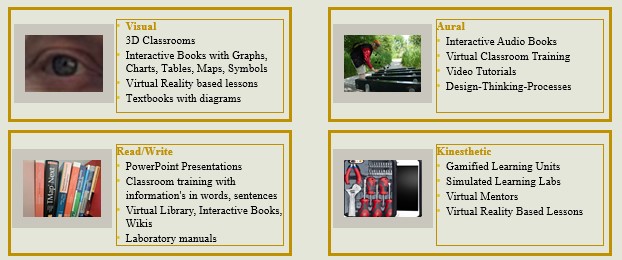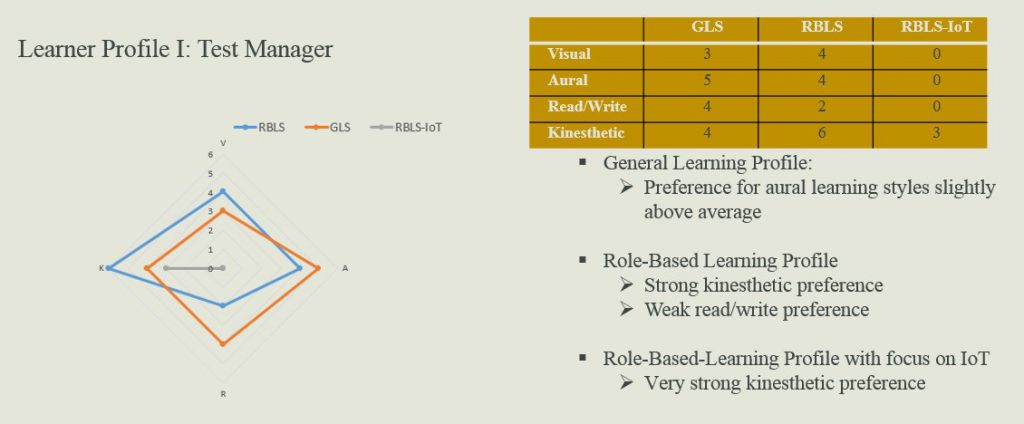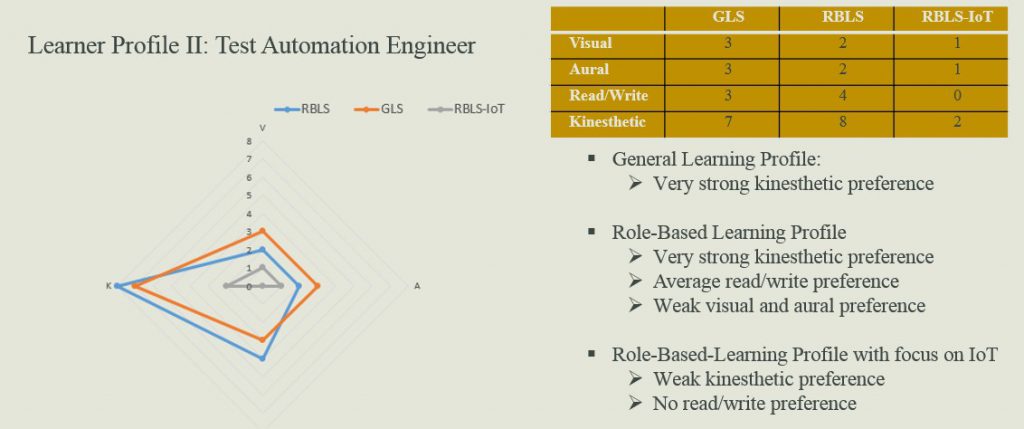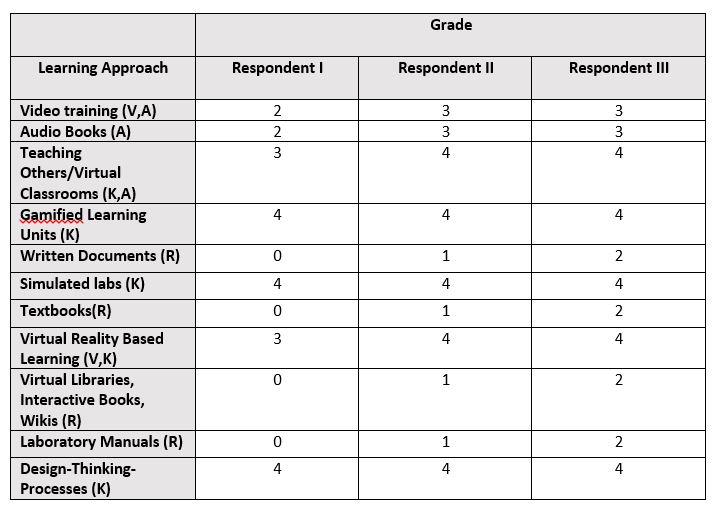E-LEARNING STRATEGIES FOR SOFTWARE TESTING PROFESSIONALS TO IOT TESTING PROFESSIONALS
July 19, 2019
Recently, I conducted an online survey to evaluate and compare the general learning profile and the role-based learning profile of Software Testing Experts in their individual role. It has been differentiated between the four principal roles in Software Testing: Test Engineer (general), Test Analyst, Test Manager, and Test Automation Engineer.
The VARK model
for learners
The survey based on the VARK questionnaire for students, which has been developed at the end of the 1980s by Neil Fleming. VARK stands for the initial letters of the 4 learning styles Visual, Aural, Read/Write (Verbal) and Kinesthetic. Fleming launched this approach in 1987 in the New Zealand school system. Later it was adopted in several scientific and professional domains.
The following figure shows examples for
appropriate learning environments according to the personal learning
preference:

In total, 20 respondents completed the survey, of
which 8 were Test Managers, 5 Test Analysts, 4 Test Automation Engineers and 3 General
Testers. Of the 20 respondents, 5 of were female, 15 were male. 4 of the
respondents were between 25 and 29 years old, 4 between 30 and 34 years, 5
between 40 and 44 years, 3 between 45 and 49 years, 2 between 50 and 54 years,
2 between 55 and 59 years and 3 between 60 and 64 years.
In the following sample learning profiles of 3 respondents, respectively one Test Manager, one Test Automation Engineer, and one Test Analyst are demonstrated.
Evaluation of the survey
The survey consisted of two questionnaires with respectively 16 questions. In the first questionnaire the preferred general learning styles of the respondents and in the second questionnaire the preferred role-based learning styles for their principal role in testing has been analyzed. RBLS defines role-based learning styles, GLS the general learning styles and RBLS-IoT the role-based learning styles with a focus on IoT related topics.
The following three figures show the learning profiles of respectively one respondent with the principal role Test Manager, Test Automation Engineer, and Test Analyst.



Recommendations
The personal learner profiles are the basis for
the development of customized learning units which match the preferred learning
styles of the individuals within a Virtual Learning Environment.
In the following table, suitable virtual learning
units for respective respondents are determined according to the outcomes of
the online survey. Therefore as well the preferences for learning in the field
of IoT testing, testing in general as also their general learning preferences were
consulted.
| Respondent I | Respondent II | Respondent III | |
| VISUAL | 56,25 | 81,25 | 84,38 |
| AURAL | 68,75 | 81,25 | 75,00 |
| READ/WRITE | 43,75 | 56,25 | 65,63 |
| KINESTHETIC | 256,25 | 206,25 | 209,38 |
The weighting of the outcomes of the survey is as
follows:
General-Learning Profile (GLS) = 1
Role-based learning profile (RBLS) = GLS +
0,5*GLS = 1,5*GLS
Role-based learning profile with focus on IoT
(RBLS-IoT) = RBLS + (0, 25 *GLS) = (1,5*GLS) + (0, 25*GLS) =1,75*GLS
Learning Profile (Respondent (n)) (LPR (n) = GLS
(n) + RBLS (n) + RBLS-IoT (n)
The recommendation for the following individual
learning methods is based on the learning profile for the respective respondent
(LPR). The following table shows the recommendation of the suitability of the
respective learning method for the individual respondents. The grade of
suitability for the respective learning unit is defined as follow:
Grade 0: not recommendable: LPR > 50, 00
Grade 1: hardly recommendable: LPR > 60, 00
Grade 2: week recommendable: LPR > 75, 00
Grade 3: recommendable: LPR > 100, 00
Grade 4: strong recommendable: LPR >= 100, 00
The examples of learning units are individually
characterized by the learning styles according to the VARK model for learners
which comply with the respective learning approach.
V: Visual, A: Aural, R: Read/Write (Verbal), K: Kinesthetic

Video training indicates as well visual as also
aural learning. Knowledge is conveyed as well through images as also through
spoken words.
In virtual classrooms, people learn as well from imitation as also from spoken words. Virtual Reality enables as well as visual learning through images as also learning through imitation.
The online survey is based on self-assessment of the respondents. This gives the respondents orientation, but to evaluate the real learning style empirical evaluation is essential.
In my next blog, I will demonstrate an example of the webinar for further education of software testers to the Internet of Things Testers through the example of an online simulation game. The assignment will be testing of simple use cases in a Lego Internet of Things environment. The use cases will be related on the Lego Mindstorms Education teaching concepts for MINT[1]subjects.
[1]
Mathematics, Informatics, Natural sciences, and Technology

 English | EN
English | EN 